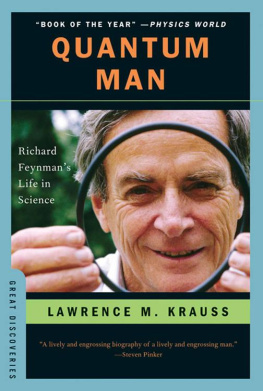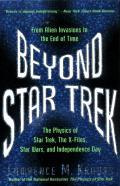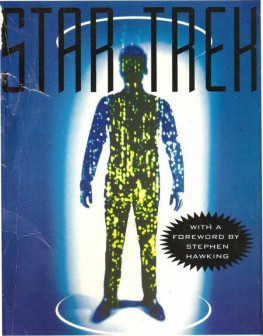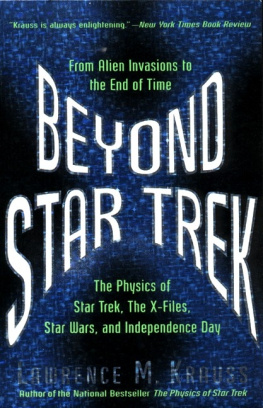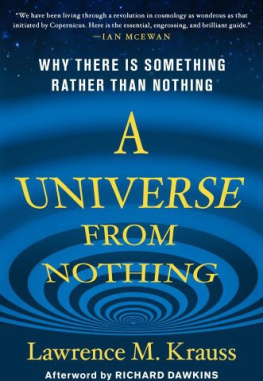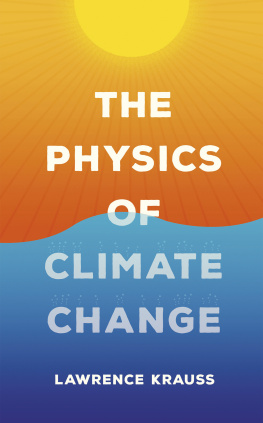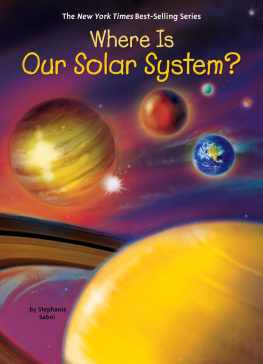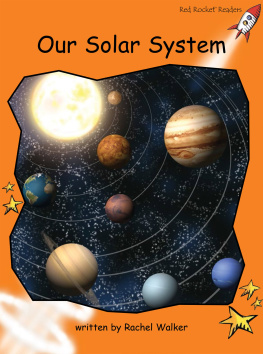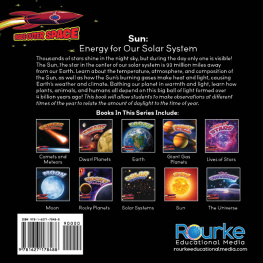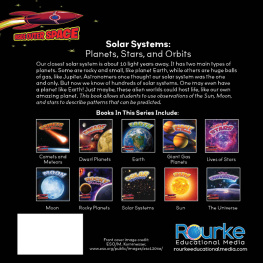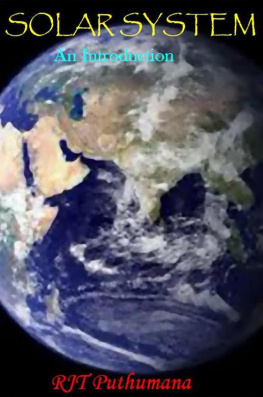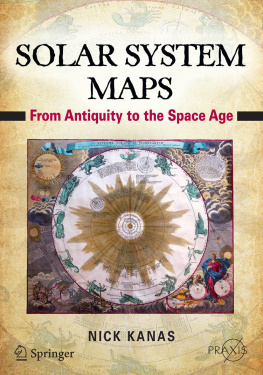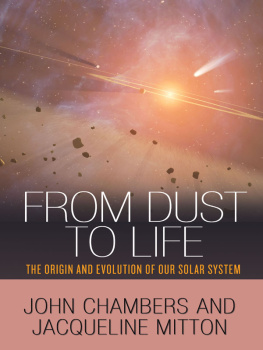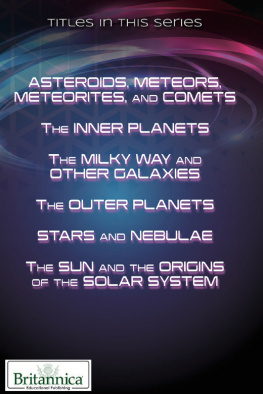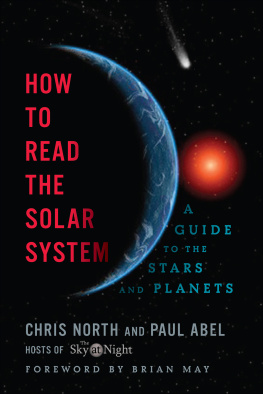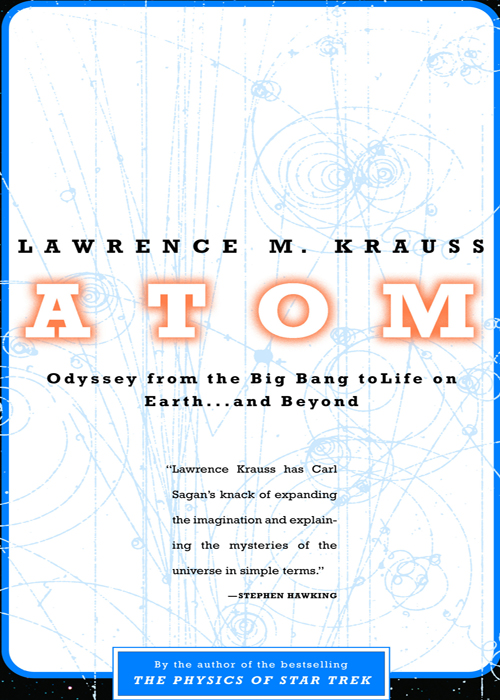ATOM. Copyright 2001 by Lawrence M. Krauss. All rights reserved. No part of this book may be reproduced in any form or by any electronic or mechanical means, including information storage and retrieval systems, without permission in writing from the publisher, except by a reviewer who may quote brief passages in a review.
The author is grateful for permission to quote from the following sources: Excerpt from East Coker in Four Quartets, copyright 1940 by T. S. Eliot and renewed 1968 by Esme Valerie Eliot, reprinted by permission of Harcourt, Inc.; Brotherhood (Hermandad) by Octavio Paz, translated by Eliot Weinberger, from Collected Poems 19571987, copyright 1986 by Octavio Paz and Eliot Weinberger. Reprinted by permission of New Directions Publishing Corp.
Warner Books,
Hachette Book Group
237 Park Avenue
New York, NY 10017
ISBN 978-0-7595-2321-0
A hardcover edition of this book was published in 2001 by Little, Brown and Company.
First eBook Edition: April 2001
Visit our website at www.HachetteBookGroup.com.
Quintessence: The Mystery of the Missing Mass in the Universe
Beyond Star Trek: Physics from Alien Invasions to the End of Time
The Physics of Star Trek
Fear of Physics: A Guide for the Perplexed
The Fifth Essence: The Search for Dark Matter in the Universe
TO KATE, FOR 21 YEARS OF PATIENCE
I am a man: little do I last
and the night is enormous.
But I look up:
the stars write.
Unknowing I understand:
I too am written,
and at this very moment
someone spells me out.
OCTAVIO PAZ
THE CITY
ON THE EDGE
OF FOREVER
A s you wander past the Htel de Matignon, the official residence of the French prime minister, past the art and antiques shops that crowd together amid the bustle and color of the 7th arrondissemont in Paris, you arrive at the courtyard of a grand eighteenth-century estate, whose walls protect a garden enclave from the traffic, noise, and concerns of the outside world. Throughout the gardens and the mansion located at their center, you can gaze upon the works of one of the nineteenth centurys greatest sculptors, Auguste Rodin.
If you pay the entry fee and walk inside the villa, up the grand staircase to the upstairs foyer overlooking the immaculate gardens below, you will come face to face with the miracle by which solid rock is transformed into the sensuous outlines of the human form. While sculptors throughout the ages have created beautiful images in media ranging from rock and bronze to wood and glass, the uniqueness and majesty of Rodins art lie in part in the striking juxtaposition of form and formlessness. It seems as if the rock itself is giving birth to the tender and sometimes tragic human shapes that rise up from its foundation: a couple locked in a caress, a nymph at rest, humanity cradled in a huge guardian hand. Whenever my eyes move from the rough-hewn edges to the smooth shapes within, my mind also begins to wander, but over a far broader horizon. I cannot help picturing this transformation as an allegory for our own long journey out of nothingness. As I touch the cool and solid marble, and marvel at a couple locked in an ecstatic and apparently eternal embrace, I ask myself whether this too is an illusion, whether anything is eternal, and where our own future lies. And I think about my own remarkable fortune to be a living, cognizant creature who can make such speculations at a time when some of natures most perplexing mysteries may be yielding to our persistent push. Such is, I suppose, the power of great art to transport you beyond your immediate concerns and free your mind and spirit to wander.
The worlds religions too speak of creation and transformation, of life and death and sometimes resurrection. The cycle of life birth, death, and birth again has occurred with clocklike regularity, on scales ranging from minutes to millennia, over the course of eons on Earth. But together, all these many lives and deaths represent merely a snapshot in cosmic time. The universe we understand existed for almost twice as long before Earth was formed as it has existed since the cosmic bits of rock and dust first coalesced together around a medium-size star at the edge of the Milky Way galaxy. And we know for certain that the universe will continue to exist, largely unchanged, for at least twice as long again, long after our own sun has puffed up and swallowed the Earth, and before it in turn slowly dies, like an ember in a fireplace losing its glow in the dark at the end of a long winters night.
We are said to go from ashes to ashes, dust to dust. But though our nature compels us to think of our own experience as the defining feature of existence, it is not. All the while, the fundamental protagonists in the drama of life are the very atoms that make up our bodies. They may experience what we all desire: a chance at immortality.
This book tells their story.

Like all good drama, this story is not about all atoms, because atoms, like people and dogs, and even cockroaches, have individual histories. Rather, this is a story about one atom in particular, an atom of oxygen, located in a drop of water, on a planet whose surface is largely covered by water but whose evolution is for the moment dominated by intelligent beings who live on land. It could, at the present moment, be located in a glass of water you drink as you read this book. It could have been in a drop of sweat dripping from Michael Jordans nose as he leapt for a basketball in the final game of his career, or in a large wave that is about to strike land after traveling 4,000 miles through the Pacific Ocean. No matter. Our story begins before the water itself existed, and ends well after the planet on which the water is found is no more, the myriad human tragedies of the eons perhaps long forgotten. It is a story rich in drama, and poetry, with moments of fortune and remarkable serendipity, and more than a few of tragedy.
As I embark on this story, I cannot help reflecting on how many times my mother admonished me as a child, Dont touch that, you dont know where its been! She would have been surprised .
PART
ONE
DIVINE
WIND
The world becomes stranger, the
pattern more complicated
Of dead and living. Not the intense
moment
Isolated, with no before and after,
But a lifetime burning in every moment
T. S. ELIOT
THE UNIVERSE
IN AN ATOM
Many are called, but few are chosen.
MATTHEW 22:14
I n the year 1281, the second Mongol invasion of Japan began, and ended. The invaders were defeated as much by the force of nature as by the Japanese warriors, as the Mongol ships suffered grievous losses due to the Kamikaze, or divine wind. This routed the invaders and boosted Japanese pride in their islands invincibility, much as the storms that helped repel the Spanish Armada from British shores 307 years later immortalized in a commemorative medal with the words God Blew, and they were scattered helped affirm the sense of Divine Right harbored by Mother England for centuries thereafter.
Those Mongol ships that survived the crossing of the Sea of Japan may have noticed the range of mountains that rise sharply from the water near the town of Toyama. These are known by some as the Japanese Alps a popular skiing attraction today. Deep below these snowy peaks, where the sun never shines, indeed has never shone, may lie the secret of our existence, forged from a fiery wind, not necessarily divine, but more intense than any that has ever swept the Earth and as old as creation itself.


